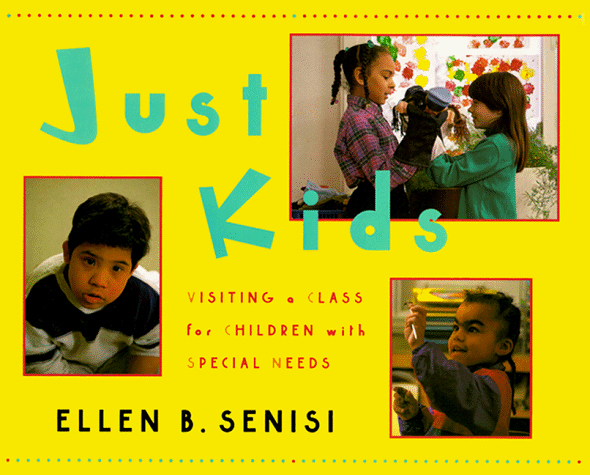
| Author: | Hellen B. Senisi |
| Publisher: | Dutton Juvenile |
| Publication Year: | 1998 |
| Page Count: | 40 |
| Lexile Measure: | 690L |
| For Ages: | 7 – 11 |
| For Grades: | 2 – 5 |
Themes
- Diversity
- Inclusion
- Acceptance
- Friendship
- Appreciating differences
Summary
“Just Kids” was published in 1998, but it’s message is nowhere close to outdated. Ellen B. Senisi’s beautiful photo-essay gives readers a window into the world of children with disabilities like Down syndrome, epilepsy, ADHD, and autism. For those who don’t benefit from the full-color photographs, text descriptions paint a picture of a self-contained special education classroom as well as some of the special services these students experience like speech, physical, and occupational therapy. Just watch what happens when one general education student is forced to actually interact with the “special” kids she once shunned and ends up finding herself to be one of their biggest advocates. This inspiring work definitely accomplishes its goal of providing typically abled children with a valuable, perspective changing picture of the school day routine for kids with disabilities. By building familiarity with a group that is considered different, stigma and prejudice are significantly reduced. Respect and acceptance only come when we are willing to get to know the other party as a person, rather than by their outward characteristics. This lesson is just as true for children as it is for grown-ups!
For the audio version of this picture book, visit the BARD catalog of the National Library Service for the Blind.
Central Message
Don’t judge until you actually get to know the person. Different isn’t always a bad thing and taking the time to learn about someone different will open up your world and change your perception of the group they belong to.
Discussion Points
- Use person-first language: Example: kid with a disability, NOT disabled kid
- Look beyond outward attributes to the person inside
- Differences can be assets to any community
- Ask your child if there is someone in their class or school who is ignored by other kids. Why do they think this might be happening? Encourage them to sit down with this kid and really try to get to know them as a person.
- Ask your child if they know of any kids with disabilities in their school. How are these kids treated by other students? What opportunities are there for interacting with these students? Encourage them to try to talk to one of them and about their perspective.
Download the National Library Service’s Production of Just Kids Today!
